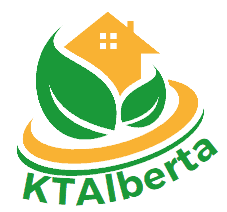As the global population continues to grow, so does the challenge of managing waste and its impact on the environment. In Alberta, Canada, the need for sustainable waste management and recycling practices has become more pressing than ever. The province’s commitment to environmental stewardship and responsible resource use has paved the way for innovative approaches to waste reduction, recycling, and the promotion of circular economies. This article explores the strategies and initiatives that Alberta has embraced to ensure a more sustainable future through effective waste management and recycling.
The Growing Waste Challenge
The rapid pace of urbanization and industrialization has led to an increase in waste generation. Improper waste management can result in pollution, habitat destruction, and contribute to climate change through the release of greenhouse gases from landfills. Alberta recognizes the urgency of addressing these challenges and has taken significant steps to manage waste more sustainably.
Reducing Waste at the Source
One of the cornerstones of sustainable waste management is source reduction. This involves minimizing waste generation by making conscious choices to reduce, reuse, and repair items. Alberta’s government, in collaboration with Canada.ca, promotes awareness campaigns to encourage citizens and businesses to adopt eco-friendly practices, such as reducing single-use plastics and embracing the principles of a circular economy.
Recycling and Extended Producer Responsibility
Recycling plays a pivotal role in diverting waste from landfills and conserving valuable resources. Alberta has implemented recycling programs for various materials, including paper, plastics, glass, and electronics. These programs encourage the separation and proper disposal of recyclable items. Moreover, Alberta’s commitment to extended producer responsibility means that manufacturers are held accountable for the disposal of their products at the end of their life cycle, incentivizing the design of products that are easier to recycle.
Innovations in Waste-to-Energy
Alberta is exploring innovative waste-to-energy solutions that convert waste into usable energy while minimizing environmental impacts. Technologies such as anaerobic digestion and incineration with energy recovery have gained traction. These methods not only reduce the volume of waste sent to landfills but also contribute to clean energy production.
Circular Economy Initiatives

The concept of a circular economy revolves around reducing waste by designing products with longevity and recyclability in mind. Alberta is investing in research and development to create closed-loop systems where materials are continuously recycled and repurposed. By aligning with the circular economy framework, the province aims to reduce its dependence on virgin resources and create a more sustainable flow of materials. The role of citizen science in Alberta’s environmental monitoring, read more here.
Community Engagement and Education
Sustainable waste management is a collective effort that requires the engagement of communities, businesses, and government entities. Alberta fosters community involvement through educational programs, workshops, and waste reduction events. By raising awareness about the environmental impact of waste and the benefits of recycling, Alberta is empowering its citizens to become active participants in the journey toward sustainability.
Government Policies and Regulations
Alberta’s commitment to sustainable waste management is reflected in its policies and regulations. The province has established waste reduction targets and implemented laws that govern waste disposal practices. These regulations ensure that waste is managed responsibly and encourage the adoption of innovative waste management technologies.
The Road Ahead: Challenges and Opportunities
While Alberta has made significant progress in sustainable waste management and recycling, challenges remain. Increasing public awareness, improving waste collection infrastructure, and addressing the financial viability of recycling programs are ongoing priorities. Additionally, encouraging businesses to adopt sustainable packaging and reducing the environmental impact of e-waste are areas that require continued attention.
In conclusion, Alberta’s commitment to sustainable waste management and recycling is a testament to its dedication to environmental stewardship and responsible resource use. Through source reduction, recycling initiatives, waste-to-energy technologies, and circular economy principles, the province is forging a path toward a more sustainable future. By partnering with, Alberta is contributing to a nationwide effort to reduce waste and promote a cleaner, greener, and more resilient Canada.
Recommended literature for review:
- “The Window: A Philosophy of the Glass” by David Bayles
- “Windows in Building Conservation” by David W. Look
- “The Solar House: Passive Heating and Cooling” by Daniel D. Chiras
- “The Visual Handbook of Building and Remodeling” by Charlie Wing

